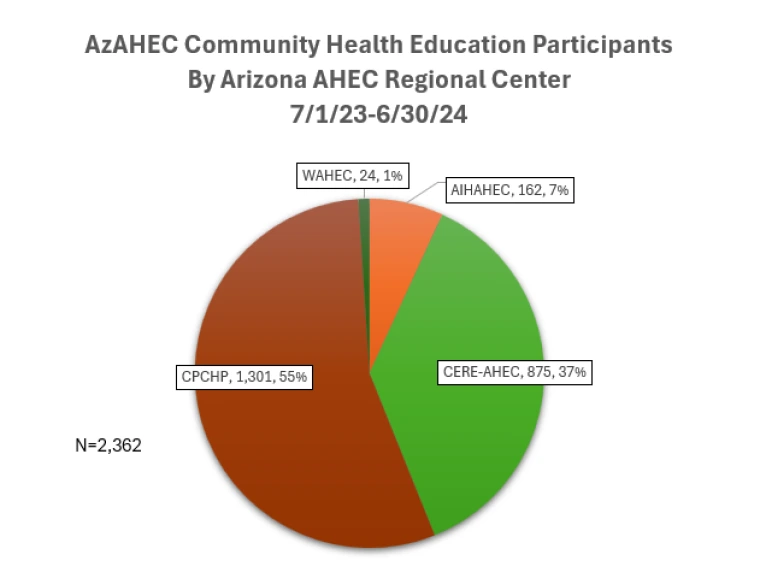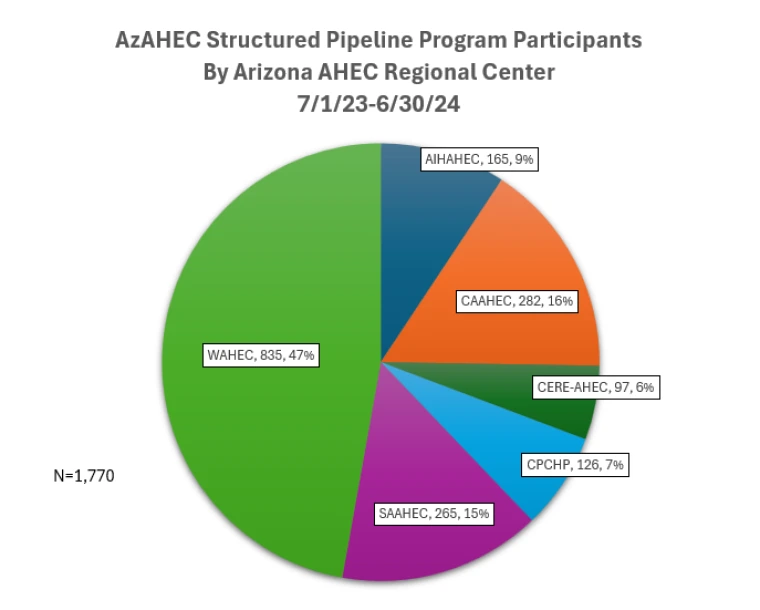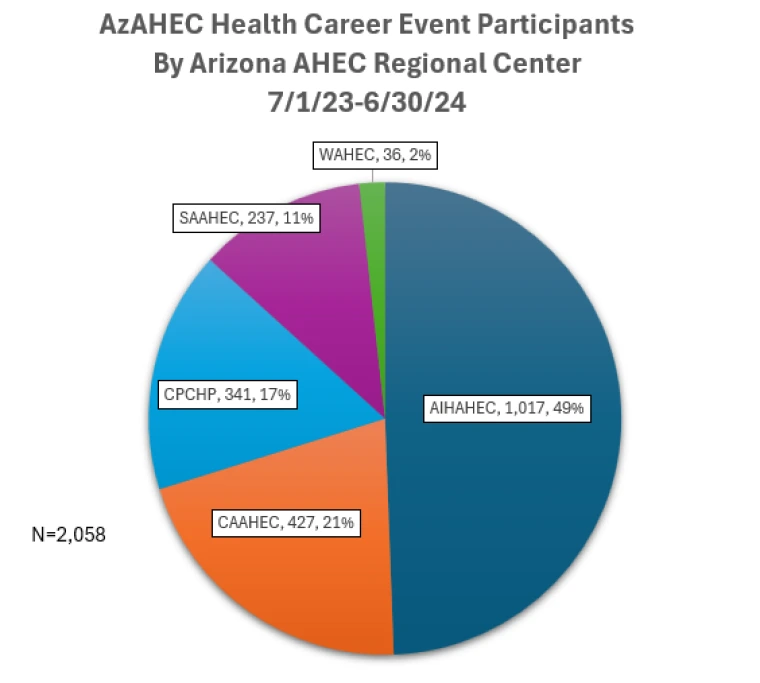AHEC Mission
The mission of Arizona AHEC is to enhance access to quality healthcare, particularly primary and preventive care, by improving the supply and distribution of healthcare professionals through academic community educational partnerships in rural and urban medically underserved areas.
History
The National AHEC Organization was developed by Congress in 1971. There are 56 AHEC programs and 236 regional centers in 47 states.
Arizona's first regional AHEC center opened in Nogales in 1984. Today, six regional centers are serving Arizona by supporting health professions education, providing continuing education for health professionals, and addressing health disparities and local health workforce issues. Our programs support development of our children, health professions students, and health professions workforce as well as recruitment and retention of a highly skilled health professions workforce. The regional centers also support many health careers programs including students in medicine (both allopathic and osteopathic medical students), nursing, pharmacy, public health, dentistry, and allied health.
Overview
The Arizona AHEC Program operates through the University of Arizona Health Sciences (UAHS), home to the UA College of Medicine - Tucson, College of Medicine - Phoenix, College of Nursing, College of Pharmacy, and Mel and Enid Zuckerman College of Public Health. Arizona AHEC is responsible to the Senior Vice President of Health Sciences at the UA. Arizona AHEC serves the State of Arizona contractually though our regional centers.
Arizona AHEC receives funds from federal and state sources. The federal fiscal year is September 1 through August 31, and the state fiscal year is July 1 to June 30. The federal award is from the U.S. Department of Health and Human Services, Health Resources and Services Administration, Bureau of Health Professions Model AHEC grant award. This federal award requires the program's regional centers to receive 75 percent of the funds with the remaining 25 percent going as support for the state program. State funds are allocated to Arizona AHEC through the Arizona State Lottery (per ARS 5-572C).
Program Highlights
The AzAHEC Program, Rural Health Profession Programs (RHPPs), Regional Centers, and Graduate Medical Education (GME, aka residency training). supported clinical rotations throughout Arizona. Dedicated, experienced preceptors and strong academic partnerships with colleges and universities provided high quality community-based education. Some trainees received housing, travel, and related expense support for experiences in remote areas.
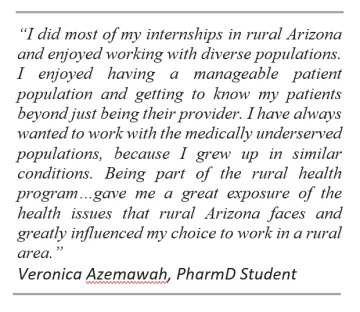

Regional Centers sponsored numerous CE/CME events throughout the year for health professionals statewide. These events result in health professionals obtaining continuing education units (CEU) toward achievement of licensure requirements within their profession. Regional Centers additionally sponsored numerous Continuing Professional Development events for health professionals.
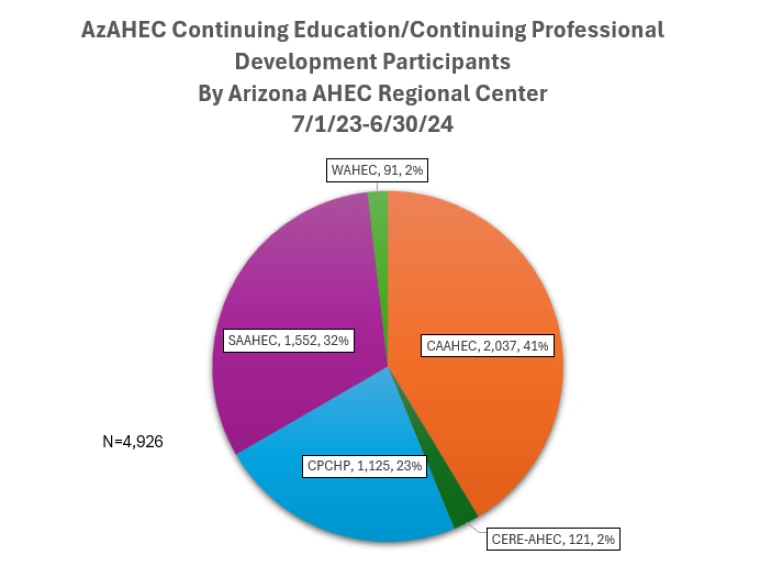
Regional Centers coordinated and supported health education activities and events for local community members throughout Arizona’s rural and urban underserved areas.
